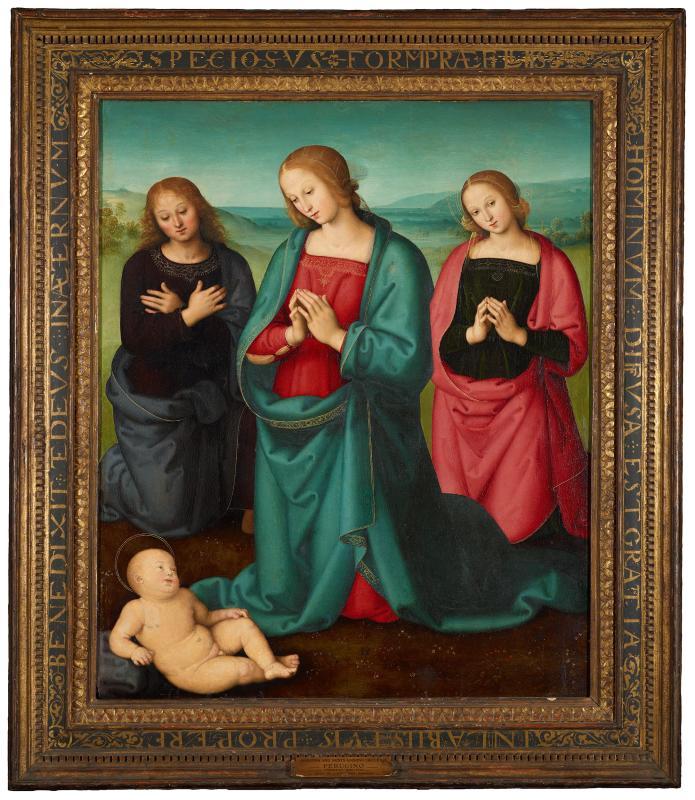
Known for his graceful figures, Perugino, the leading Umbrian painter of his day, was Raphael's principal master. Using harmonious jewel-like tones, the artist depicted the Virgin flanked by St. John the Evangelist and an unidentified female saint, likely Mary Magdalene. The inscription on the frame, referring to the Christ child, is from Psalm 45: Fairer in beauty are you than the sons of men; grace is poured out upon they lips; thus God has blessed you forever.
The painting depicts the Virgin adoring the Christ child flanked by two saints. The male saint to the left is probably St. John the Evangelist. The female saint to the right has not been convincingly identified. She is generally thought to be the Magdalene, but also has been identified as St. Sophronia based on a reading of the partial inscription on her halo. It has recently been suggested by William Voelkle that this inscription is not a name, but the phrase "Ora pro nobis".
